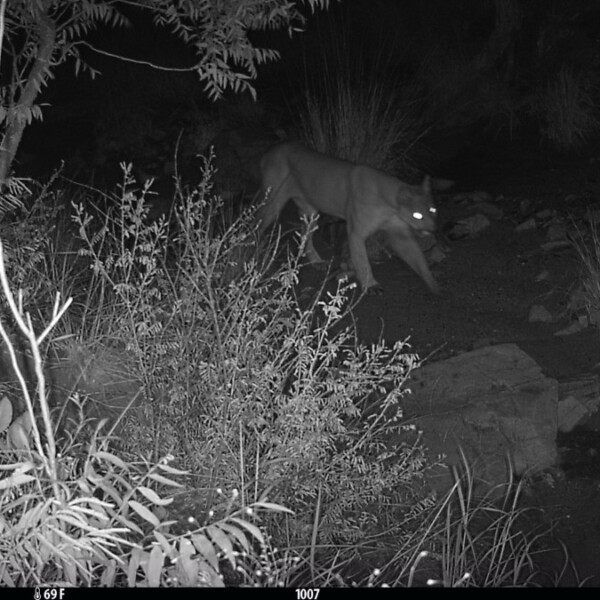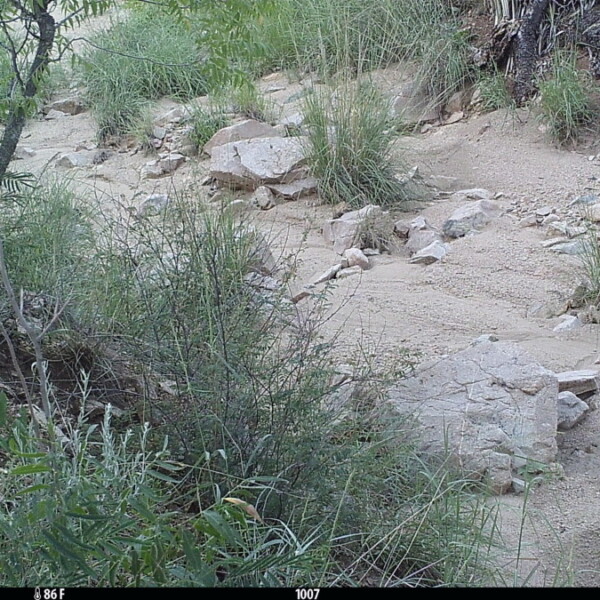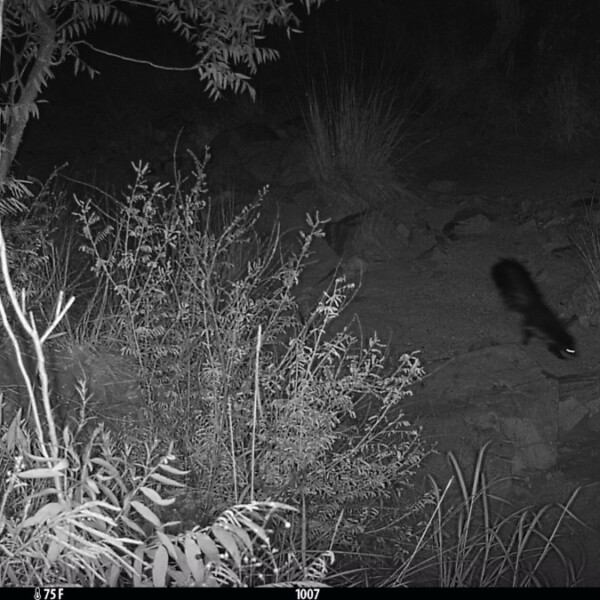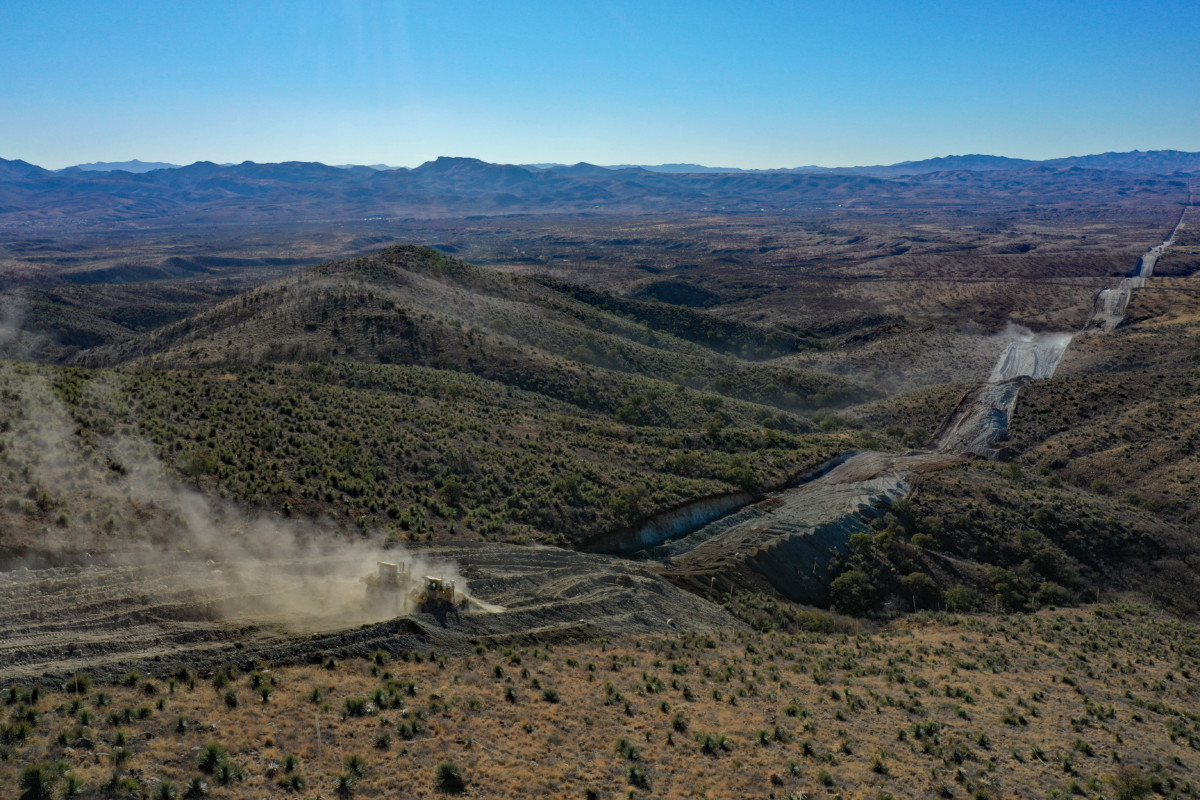While out visiting the westernmost Patagonia Mountain cameras in the Border Wildlife Study, our field team discovered a lot of debris from previous border wall construction in a wash just north of the U.S.-Mexico border. As part of this border project, a road crossing, installed in the days leading up to Biden’s wall proclamation, was built across the wash to accommodate wall construction traffic. A dam with culverts was added underneath this new road to support it.
The wash this border road cuts through is near one of the most diverse cameras we have in the study—we have discovered that almost everything except black bears uses this large wash system as an important wildlife corridor. This includes skunk, mountain lion, bobcat, deer, white-nosed coati, and North Mexican Virginia opossum.
With the border road in place, however, species like these will be deterred by frequent border patrolling, including noise and light disturbance, and have a harder time migrating between the U.S. and Mexico.
We are also concerned about the concrete culverts installed at the base of the dam in this wash (the dam is about 20 feet tall at its highest point). Shown below, the culverts have round, 15-inch openings—probably to allow for the passage of water through to the Mexican side of the border.
Unfortunately, these culverts are entirely inadequate to address the potential flows in this wash—especially during summer monsoon rains—and are certain to become blocked by even small flows through this system. Not only is this going to cause severe flooding problems, but the viability of this wash as a wildlife passage has been severely compromised. If the planned wall is built, it would no longer be passable by any but the smallest species, but even without that, the new traffic along this road will have its own detrimental effects.
It’s vital that the public act now to advocate for the cancelation of border wall contracts and the repurposing of wall funding to support restoration. Meanwhile, we will continue to study the wildlife affected by the border wall and develop science-based restoration priorities to begin the work of healing the land and reconnecting vital wildlife corridors.
Please help us restore the borderlands. We’ve launched a Border Wall Research and Recovery Fund to raise $50,000 by March 15 to keep this work going strong, and we can’t do it without you.







